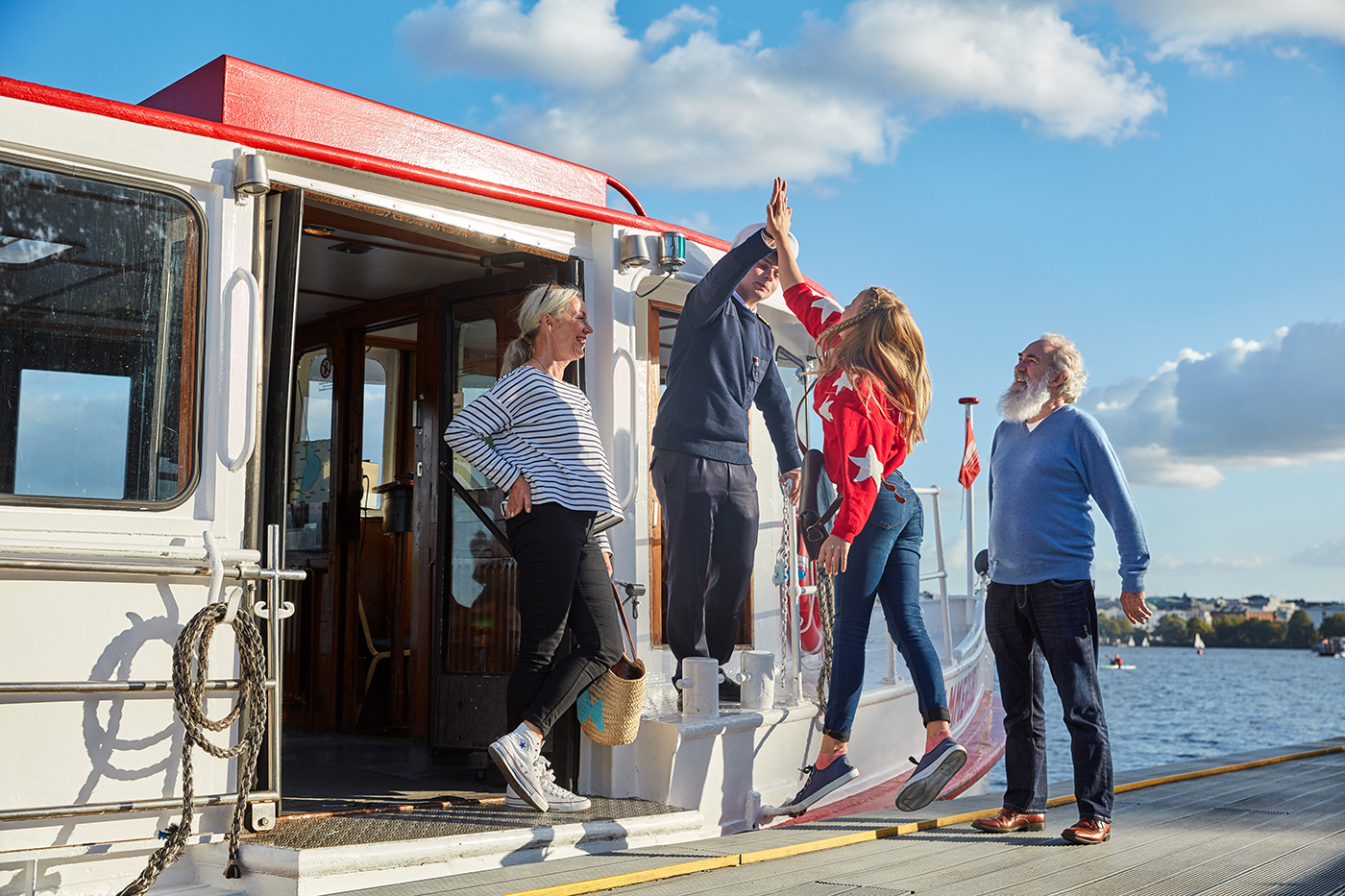Our history
A short timeline of sailing on the Alster
Lovingly known as the Alster steamboats among the people of Hamburg, the “white fleet” has featured modern ships for many decades now. They are just as much a part of Hamburg as the Michel and the port. This not only is due to the years-long tradition of sailing on the Alster, but also to its popularity among residents and visitors of Hamburg alike.


The beginnings

The first transport company

The public transport company takes over

Back in safe waters

The fleet grows

Setting sail for the future
The pioneering project in terms of ecology came to a successful close in 2008. On 29 August, the fuel cell ship (FCS) Alsterwasser became the world’s first fuel-cell-powered passenger ship for line service to take up service. In the zero-emission ship, nothing smells like diesel, and neither carbon emissions nor particulate matter nor other harmful emissions are released into the air – just harmless steam.
In the year to follow, the big anniversary “150 years of Alster shipping” was celebrated with an exhibition in the Europa-Passage shopping centre and a historical replica of the Alster scuttle Else.





